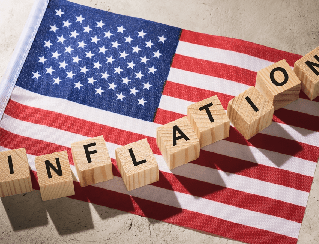Trading in the forex market generally involves speculating on the movements of currency pairs and predicting whether the market will move up or down. But as with any form of trading, there is more to it than this, and there are a number of different aspects you’ll need to be aware of as you approach the market. The FX margin is one of these aspects.
Understanding margins
What does the margin mean when trading forex?
The margin level in forex is a designated amount of funds that you will be required to keep in your account at any one time. If you do not have these funds available in your account, you will not be able to open positions in the market and you won’t be able to make trades.
The exact amount of money you need to keep in your account will vary according to the broker you are working with. Some brokers will require that more money is kept in your account in order to guarantee open positions. In other words, they will have a high FX margin requirement, while others will require less. The broker will make this known in the form of a percentage, showing you how much balance you need to retain in relation to your open positions.
So, if the broker has a 5% margin requirement for forex trading, and you open a trade with $10,000, you’ll need to keep $500 in your account for the full active duration of the trade. If your balance falls below this level, trades can be closed and liquidated as a result. This means it is important to remain aware of pip movements. Pips in FX are incremental price movements, usually at the fourth decimal place of the currency pair value. The pip movement will tell you which way the market is travelling and will give you an indication of whether you are approaching your margin or not.
If you are trading without leverage, FX margins do not pose too much of a problem — a small percentage of a low-value trade is not too difficult to maintain. However, margins become more important when trading on leverage, as this enables traders to open positions of far greater value, pushing the margin requirement up. More on this below.
The margin trading technique
The FX margin is not just something that traders need to be aware of, but it’s also something they can use to their own advantage by trading on the margin — although this requires a very careful approach, and there are no guarantees of success.
Trading on the margin essentially means you cover the margin requirement percentage and the broker covers the rest. So, returning to the above example, you would have to put down $500 to meet the 5% margin requirement, and the broker would put down the remaining $9,500 to cover the full $10,000. From here, you will need to ensure that you have enough funds in your account to cover this margin at all times – essentially maintaining a $500 balance to control a $10,000 trade.
This can be attractive for traders working with currency pairs and currency correlations, as it enables greater exposure to market forces – and therefore greater potential benefits from forex trading – with only a relatively small investment of your own capital. However, this is a risky strategy and should be used with great caution. When you trade on the margin in this way, you are borrowing funds directly from the broker, and these funds will need to be paid back.
Let’s say you decided to open the margin trading position we’ve looked at above, putting down $500 to control a $10,000 trade. If this position falls to 92% of its original worth – $9,200 – you have lost your $500 margin and are also responsible for the loss of $300 of the broker’s money. This will result in a margin call. In other words, you will have to cover this loss and bring your balance back up to 5% of the initial position. In order to protect themselves and their funds, brokers will require that you meet this margin call and will simply liquidate the position if you do not meet this requirement.
So, while margin trading can help traders to increase their profits, it also significantly increases the risk they face during trading.
The margin call in more detail
A margin call can happen whether you are trading on the margin, trading on leverage, or even if you are only operating a standard trading position.
Basically, if you are trading on the margin or on leverage, the broker will need to guarantee the money they have lent to you. This means you will need to keep a certain level of capital in your account, according to the margin percentage requirement. Even if you have not borrowed any money from the brokerage to open the position, you will still need to cover any spread changes or maintenance costs associated with the trade, and so the margin level will still apply. If the available funds in your account fall below the margin level, a margin call will be issued.
When a margin call happens, you’ll need to make sure you have enough funds in your account to continue. You may decide to add more funds to cover the losses and restore the FX margin level. This may be a good idea if you feel that the losses are only temporary and your predictions indicate larger gains in the long term.
Alternatively, you can choose to close certain active positions to bring your account back into line with trading parameters. It is best to do this before a margin call is made, as the broker will automatically start closing positions if your funds drop below a certain level, and this can cause you to lose your invested capital.
Closing winning trades will increase your account balance and may help to avoid a margin call, while closing losing trades will limit your losses as you keep your account within the required parameters. Bear in mind you may still lose money or miss out on future trading successes from winning positions, but you will still be required to close these positions to avoid or to meet a margin call.
Stop loss tools are also useful here. A stop loss will automatically close your position once it falls below a certain level. Typically, these are used to prevent excessive losses and to help you to keep within your longer-term trading strategy. However, they are also very useful in avoiding margin calls. The exchange rate in forex can be volatile and may move up or down unexpectedly. With this in mind, an automated tool like stop loss provides you with valuable protection.
Managing available funds, open positions, and margin requirements is an important part of learning how to trade forex. Achieving success in this tricky balancing act is certainly not easy but is a necessary skill for traders seeking to become more experienced.
The difference between margin and leverage in forex trading
What is the difference between margin and leverage in forex trading? At first glance, the two concepts appear to be almost the same. Both involve borrowing additional funds that allow you to control a far larger position than your available funds would allow, and both require you to remain aware of the margin level at all times. However, trading on leverage in forex is fundamentally different from margin trading in the way it is represented.
Leverage trading is defined according to a ratio. For example, you may open a position with 25:1 leverage – this means for every $1 of your own money you put up for the trade, you are borrowing $25. To control a $10,000 position, you’d need to put up $400.
Margin trading is defined according to a percentage. This percentage shows you the amount of capital you will need to hold in your account if you are to keep your active positions open. So, a margin of 4% would be the same as trading a position with 25:1 leverage, as 100/25 = 4. You’d still need to put up the same $400 to control a position with $10,000 if you were trading with a margin of 4%.
You’ll still need to be aware of the margin requirement, whether you are margin trading or leverage trading. If the available funds fall below this amount, you’ll still need to modify this to avoid a margin call, no matter which approach you are using. Utilising a margin percentage can help you to keep this requirement in mind, and this can be useful for traders as they learn forex.
Start trading with VT Markets today
The VT Markets platform is one of the market leaders, with a range of tools for beginners and more experienced traders alike. Try our demo account to get started, then move on to real trades with the live trading account. Want to learn more about our platform or forex spreads? Get in touch with our team today.
FAQs
How is the FX margin requirement calculated?
The FX margin requirement is calculated according to the amount of protection the broker or lender desires. Larger FX margins provide more protection, as the trader needs to keep a higher proportion of the active trade value in their account to service the position.
What is a 5% margin in forex?
A 5% margin in forex means you will need to keep 5% of the value of the active trade in your account at all times. If your account balance falls below this level, your broker may decide to liquidate the trade automatically.
How much margin do I need in forex?
Each broker can set their own margin requirements, so this will vary between trades. The margin will be expressed as a percentage. So, if you’re operating a $1,000 with a 5% margin, you’ll need to keep $50 in your trading account for as long as the position is open.





























